Spring is officially here and summer is around the corner. It's that time of year when hiking is the most pleasant and rewarding. There’s nothing like appreciating verdant landscapes while moving out of your comfort zone to traverse the roughest of hiking trails. To guarantee the most enjoyable mountain treks, it's worth investing in high-quality multipurpose hiking gear, including trekking poles.
Yes, we’re serious. You don’t hike without whiskey, just as you can’t plan a serious trek in the Great Smoky Mountains without a reliable pair of trekking poles. These tools offer safety and stability when walking on uneven terrain. They can also prevent serious knee or hip injuries on the trail. Whether you’re a beginner hiker or a trail-worn veteran, we recommend giving trekking poles a try. Below are the best trekking poles to purchase for 2022.







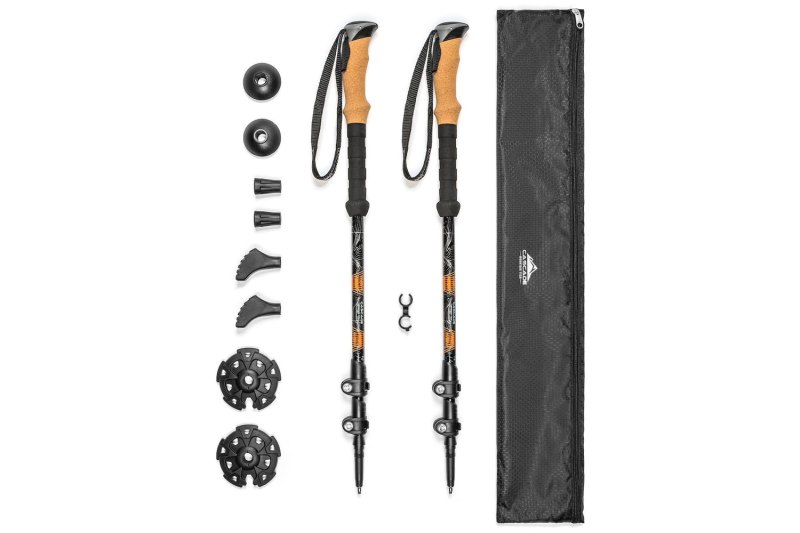
Cascade Mountain Tech Adjustable Trekking Poles
Cascade Mountain’s trekking poles are constructed from durable, aircraft-grade aluminum to endure the rigors of hiking in frigid or technical terrain. They feature a quick-lock mechanism for extra support during your outdoor excursions. It’s not that complicated to adjust: Open the tab and lengthen (or shorten) the poles to your desired height, ranging from 26 inches to 54 inches. Then, tighten the thumbscrew clockwise and close the quick lock tab.
These trekking poles come in either cork grip or EVA grip options. The cork grip option conforms to the shape of your hand and wicks away moisture -- all while providing a secure grip. We recommend this option if you frequently hike in warm weather. The EVA grip variant absorbs moisture and provides ample abrasion resistance. Like the cork grip, it also offers a comfortable grip. Opt for the EVA grip if you want to make your trek to the mountains a bit easier on your hands.

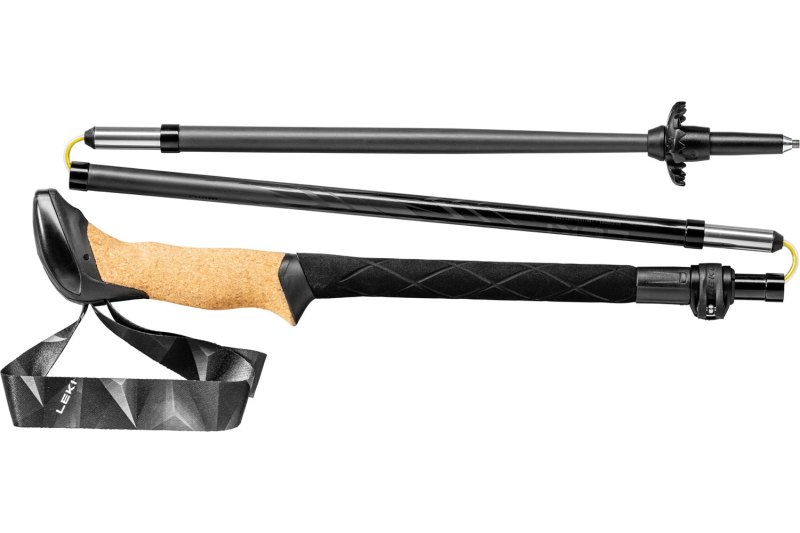
Leki Black Series FX Carbon Trekking Poles
If money is no object -- if only the best will do -- Leki crafts some of the best trekking poles on the market. The all-new Black Series FX Carbon are the swankiest and priciest option on this list, but the long list of features makes them worth the spend. The collapsible, carbon construction is ultra-strong, lightweight, and incredibly packable with an intuitive locking mechanism that makes folding and unfolding a breeze. Plus, the skin strap is breathable and featherweight to maximize all-day trail wear.

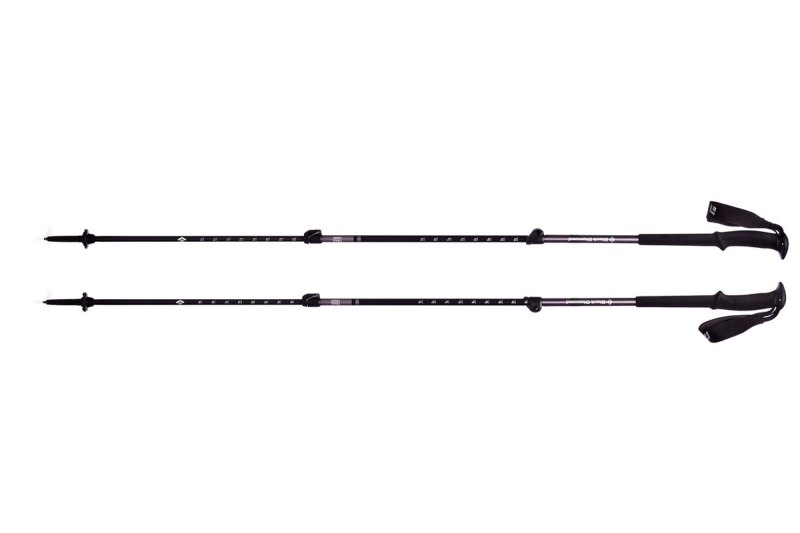
Black Diamond Trail Trekking Poles
From outdoor apparel to tents to headlamps, Black Diamond makes some of our favorite adventure gear. It's durable, reliable, and, perhaps most importantly, affordable. Its Trail Trekking Poles are no different. They combine soft but supportive, dual-density foam grips and FlintLock adjustability into one of our favorite all-around value trekking poles for hiking in any season.

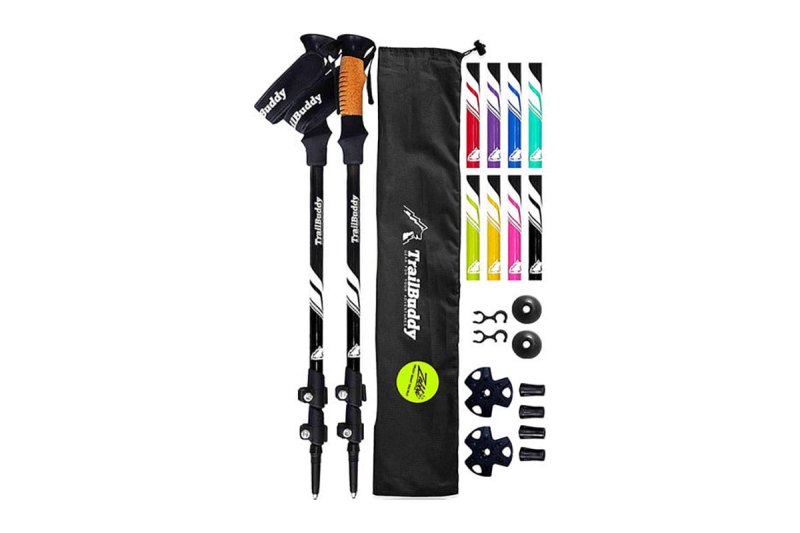
TrailBuddy Lightweight Trekking Poles
Do you have sweaty hands or often hike in wet weather? Don’t leave home without the TrailBuddy Trekking Poles. The poles feature moisture-wicking handles to keep your hands dry and sweat-free, rain or shine, not to mention that they take the shape of your hands over time. They're made to support heavy loads thanks to their aluminum construction, which also offers more impact resistance than carbon fiber. The easy-to-adjust lever locks can be easily lengthened or shortened even while trekking on rainy days or wearing gloves. Honestly, that’s a convenient and time-saving feature as some trekking poles with lever locks require an iron grip or are difficult to adjust with gloves on.

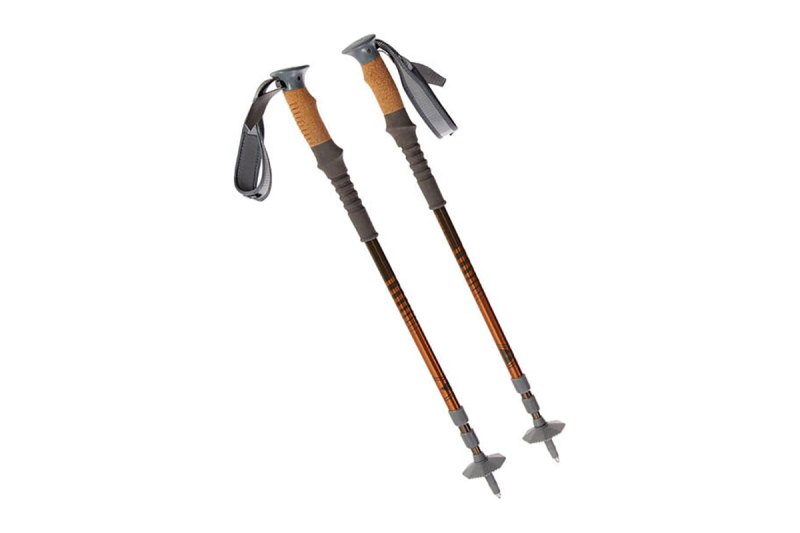
Kelty Range 2.0 Trekking Poles
They're remarkably easy to collapse or adjust; they're lightweight yet sturdy thanks to their tubular anodized aluminum construction, and we love how the cork and foam handles look and feel. There's a retro charm to a wooden handle that works perfectly with the otherwise advanced design of these poles. While we've seen many a hiker cursing his way down the mountain with a bent or snapped pole hanging off the back of his pack, we've never felt so much as a wobble out of these babies. The bottoms of the poles have a non-slip carbide tip that digs into rocks, roots, and more, and you can slip on a thick rubber cap for use on easier terrain or for storage or travel.

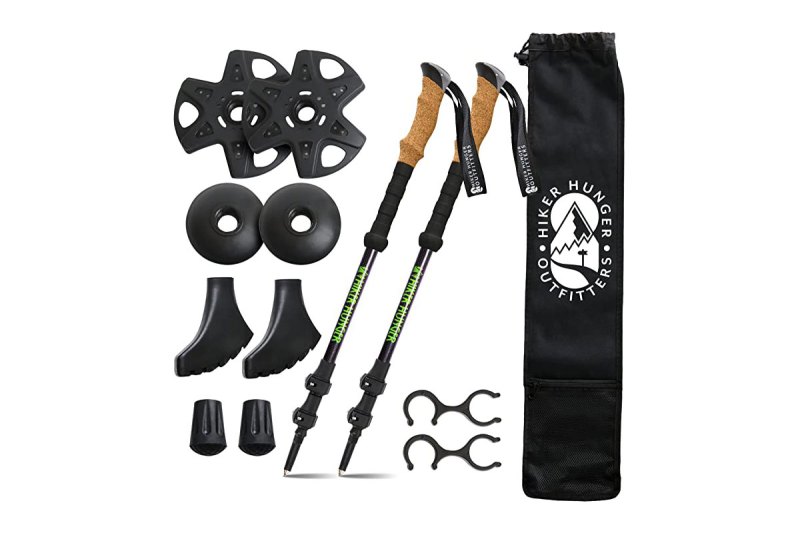
Hiker Hunger Carbon Fiber Trekking Poles
As you might expect from a product made out of carbon fiber, these poles are very lightweight, durable, and quite sturdy. They're also more expensive than the Keltys, though not by much. They use a quick flip lock that allows for single-handed length adjustment or collapsing. Bonus: They also include several tip attachments and baskets that make them suitable for use on snow or ice.

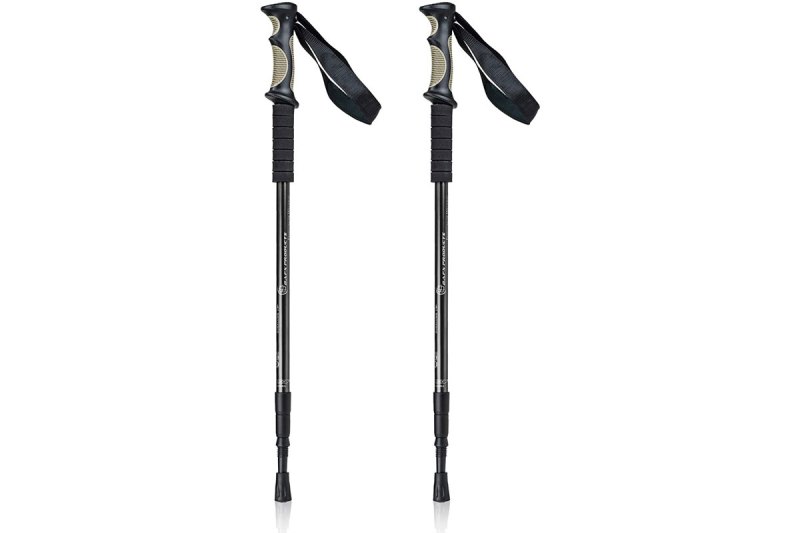
Bafx Products Walking Poles
These trekking poles cost just twenty bucks, so don't be surprised if they collapse on you someday. But do be surprised by the fact that thousands of satisfied customers have reported using them for hundreds of miles without issue. The grips aren't as fancy as the cork and foam handles of the options above, and they're heavier than most other brands, not to mention they have carbide tips and anti-shock springs. But are they worth the money? Yes, yes, they are.

How to Choose the Best Trekking Poles
Choosing the right trekking poles is largely a matter of personal preference and budget. However, the best trekking poles are actually ski poles. Why? There's no risk of a pole's joint failing when no joints exist. That said, we'd prefer to grab a pair of collapsible poles when we're hiking in the mountains.
Benefits of Choosing the Best Trekking Poles
The best trekking poles provide several major benefits for hikers. First, they provide two more points of contact with the ground, making you significantly more stable and sure-footed even over rough, uneven, or loose terrain. In other words, they reduce your chances of falling over.
Second, hiking poles allow your arms to do some of the work of moving your body along the path and/or up that mountain. The general expectation is that poles take about 10 or 15 pounds off your legs with every step. That adds up over the course of a long hike. Third, trekking poles greatly reduce the force of impact on your joints, preventing both acute and chronic injuries to the ankles, knees, hips, and various other body parts.
The poles can also be used to push thorny brambles aside, test the depths of puddles or snowdrifts, or clear unsavory whatnots from your walking path -- all things you'd probably rather not do with your hands or feet.
Finally, the poles come in handy in myriad ways, even when they're not in your hands. They can serve as a place to dry out sodden clothes or hiking boots. They're necessary for the proper pitching of some camping tents and for many tent vestibules. They make a handy tool for beating back ravenous marmots. (Don't actually beat marmots, please. They're feisty, but innocent.)




